, Set 22, 2016
AES Eletropaulo, the largest energy distributer in Brazil and one of the largest in Latin America, has just adopted Cisco’s security technology. The company has implemented latest generation firewall, in addition to VPN (Virtual Private Network), switches and high capacity routers aiming to segregate different environments, mitigating attacks to energy systems and transformation and distribution substations.
The security project is part of a global AES Corporation program applied to all business units, being AES Eletropaulo the first to implement it completely. With budget around R$ 3,5 and R$ 5 million, the project is estimated to be concluded by the end of the year. The new architecture should also cover two generators (AES Tietê and AES Uruguaiana) and the group’s service company in Brazil, AES Ergos.
Implemented by Cisco’s partner, PromonLogicalis, the project has sought a topology that would provide scalability and meet AES Corporation's security requirements. The main concern was to isolate the operational perimeter (which includes meters, substations, and power distribution systems) from the corporate perimeter (which includes intranet and database), yet allowing secure web or ERPs (administrative systems) connection.
At the project’s base, Cisco ASA firewalls were used to provide protection against advanced threats and data traffic visibility, ensuring that substation environment access is only allowed to SCADA (supervisory, control, and data acquisition) systems. SCADA systems are used by COD (AES Eletropaulo’s Distribution Operation Center) in transmitting and monitoring power loads.
The project also includes Cisco’s ISR routers and VPN technology for third-party information confidentiality and connection, as well as Nexus switches (for private cloud connectivity) and 50X and 6500 family switches (for connecting servers and WAN networks). With the new architecture, AES Eletropaulo's communication is fully encrypted, passing through at least two layers of firewalls equipped with IPS (intrusion prevention mechanism).
"With the ever-increasing automation and technology integration, there is a risk that some of IT world's own threats could migrate to power sector systems, which are not born with applied security concepts", explains Vander dos Santos Dias, AES Brazil’s services coordinator. "It takes solutions, tools and processes that provide visibility, protection and rapid mitigation, so that this integration occurs safely", he says.
Simulated intrusion tests and managed services
Complementing the project, AES Eletropaulo has also implemented a process that includes simulated intrusion tests (also known as "pentests") and technical crisis rooms with the company board, so that the distributor’s top management is also capable to respond in certain cases. "We have also mobilized a periodic audit team to verify if what was agreed is actually in place", said Marco Tulio, head of AES Eletropaulo’s information security area.
A managed services layer with 24/7 support is provided by PromonLogicalis, responsible for managing equipment policies and licenses, as well as incident analysis and overall project integration. "As AES Eletropaulo's networks were already Cisco's, integration was a great differential. And even solutions that interoperate with other vendors’ systems work very well, enabling PromonLogicalis to support the operation with robustness and flexibility”, said Felipe Jordão, PromonLogicalis’ security expert.
Investment and innovation protection: Smart Grid
The new security architecture will be crucial to consolidate and later expand AES Eletropaulo’s Smart Grid project. Launched in 2014 in Barueri, municipality in the Great Sao Paulo area, the project foresees the installation of 62.000 smart meters, directly impacting 250.000 people. The technology will enable a new method of electric grid management by automating AES Eletropaulo’s operations and capacity planning.
"More than a necessary item resulting from digitalization, security, today, is an innovation enabler, allowing organizations to protect investments made in new solutions development", said Ghassan Dreibi, Cisco's business development manager for Latin America. "But, of course, the energy sector is especially sensitive to attacks: while traditional networks suffer financial losses, in automation they can impact an entire population", he says.
Due to Smart Grid project’s complexity and dynamics, AES Eletropaulo estimates a three-year period before security solutions upgrade is necessary – including growing demand for new power services.
Conteúdos relacionados
Brazil , Jan 13, 2025
Logicalis anuncia mudança de comando na América Latina
A partir de 1º de março de 2025, Marcio Caputo, atual Vice-presidente do Brasil e COO Latam, assume como CEO para a região, posição ocupada por Rodrigo Parreira, que passará a atuar como consultor da Logicalis Group.

Brazil , Dec 12, 2024
Logicalis abre inscrições para o seu Programa de Estágio 2025
Estudantes têm até o dia 24 de janeiro para se candidatar
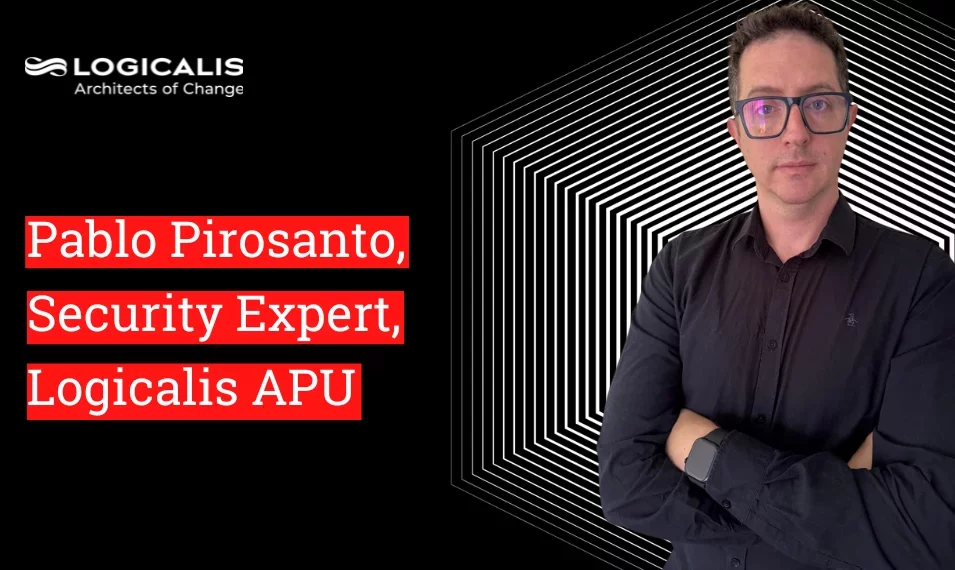
Latin and South America , Nov 22, 2024
In the news
Cybermonday: ameaças cibernéticas e medidas de proteção
Com a chegada da Cybermonday, é inevitável pensar nos cibercrimes e cibercriminosos que se tornam mais ativos quando a demanda por tecnologia aumenta. De fato, o Logicalis CIO Report 2024 destaca que a região sofre 1.600 ataques cibernéticos por segundo, sendo o ransomware um dos mais comuns. Além disso, nos primeiros seis meses de 2024, a América Latina enfrentou uma alta diversidade de malware, com uma média de 2,6 milhões de amostras únicas.

Brazil , Nov 12, 2024
Logicalis implementa SD WAN em 57 lojas de grande rede de material de construção
Grande rede varejista de material de construção está passando por um processo de substituição de sua rede SD WAN e atualização de sua arquitetura, com apoio da Logicalis

Brazil , Nov 7, 2024
A Logicalis renova o status de Microsoft Global Azure Expert MSP
O status de Microsoft Global Azure Expert MSP, conquistado pela Loicalis, é considerado o mais alto padrão possível de serviços gerenciados de nuvem do parceiro.

Brazil , Nov 6, 2024
CIOs indicam tendências e desafios do 5G e IoT
94% dos líderes de TI brasileiros estão investindo ou planejam investir em 5G privado e 98% afirmaram ter iniciativas ligadas a IoT. Pesquisa da Logicalis confirma que os CIOs buscam benefícios com o 5G, mas ainda existe espaço para melhor entendimento da tecnologia.

Brazil , Oct 30, 2024
Logicalis é eleita Parceira Global de Sustentabilidade no Cisco Partner Summit 2024
Além do prêmio global por suas práticas sustentáveis pelo segundo ano consecutivo, empresa venceu mais seis categorias na América Latina
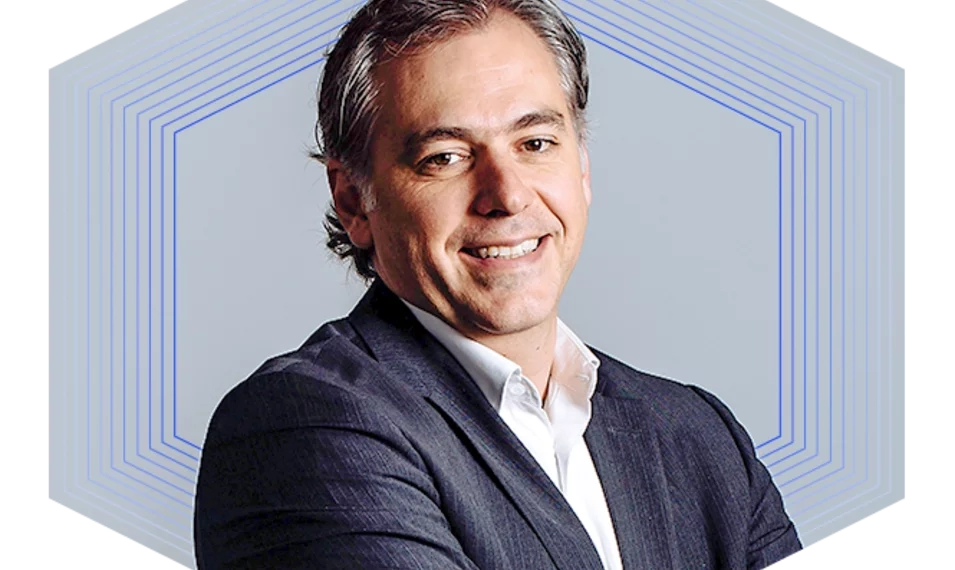
Brazil , Oct 15, 2024
Marcio Caputo assume como Vice-presidente Executivo da Logicalis no Brasil
Executivo tem como missão liderar as operações no País e expandir a presença da empresa de forma estratégica

Brazil , Oct 10, 2024
Logicalis e Red Hat lançam solução para acelerar automação de redes na América Latina
Network Automation une os recursos do Red Hat Ansible Automation Platform com os serviços da Logicalis para entregar segurança, eficiência operacional e redução de custos

Brazil , Aug 21, 2024
Logicalis abre segunda turma para o Programa Level UP, que impulsiona a capacitação de mulheres em TI
Mulheres com mais de 18 anos podem se inscrever até o dia 19 de setembro para o curso, que é totalmente on-line e gratuito

Brazil , Aug 20, 2024
Programa da Logicalis capacita pessoas com deficiência nas áreas de tecnologia e administração
Inscrições podem ser feitas até o dia 17 de agosto e ao final do curso os participantes integrarão o banco de talentos da Logicalis

Brazil , Aug 7, 2024
Logicalis lança modelo de soluções de colaboração como serviço
Nova modalidade permitirá às empresas viabilizarem economicamente o acesso a tecnologias de videoconferência de última geração, descartando a necessidade de investimento inicial e com serviços de gestão que garantem maior eficiência da infraestrutura

Brazil , Jul 10, 2024
Splunk é a nova parceira da Logicalis Latam!
A Splunk, recente aquisição da Cisco, é uma aliança estratégica da Logicalis na América Latina!

Brazil , Jul 2, 2024
Logicalis foi reconhecida no Microsoft Partner of the Year Americas!
A excelência da Logicalis como provedora de soluções e serviços de TIC foi reconhecida no Microsoft Partner of the Year Awards2024.

Brazil , Jun 3, 2024
Programa da Logicalis impulsiona capacitação de mulheres em TI
Iniciativa gratuita e focada em profissionais femininas está com inscrições abertas até 23 de junho

Brazil , May 22, 2024
Metas de emissões net-zero da Logicalis são aprovadas pela iniciativa Science Based Targets (SBTi)
Empresa assumiu compromisso global de atingir emissões net-zero até 2050 e carbono neutro nos Escopos 1 e 2 até 2025

Brazil , Apr 24, 2024
Dia Mundial da IoT: 58% das empresas na América Latina já possuem iniciativas de internet das coisas, de acordo com o IoT Snapshot 2024
Nova edição do estudo também avalia a incorporação de tecnologias de Inteligência Artificial e de 5G nos projetos de IoT
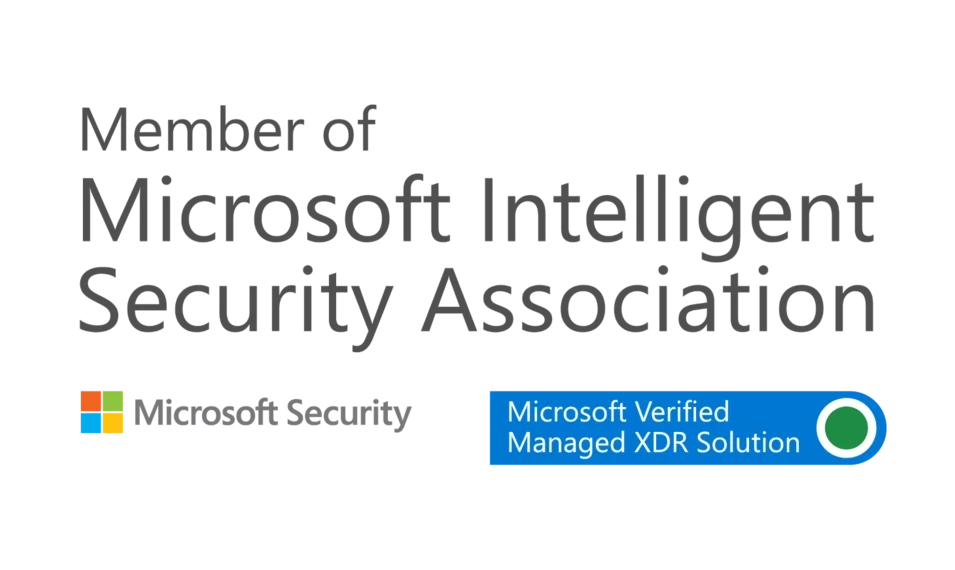
Brazil , Apr 3, 2024
Logicalis conquista status de Managed Extended Detection and Response da Microsoft
A Logicalis se junta a um grupo de elite de provedores de serviços gerenciados certificados para fornecer os serviços gerenciados de detecção e resposta mais avançados da Microsoft em todo o mundo

Brazil , Jan 4, 2024
Logicalis abre inscrições para nova turma do programa de capacitação em TI para grupos minorizados
Iniciativa gratuita e focada em negros já formou mais de 30 profissionais

Brazil , Jan 3, 2024
Logicalis firma parceria com USP para apoiar estudantes em situação de vulnerabilidade socioeconômica
Programa USP Diversa oferece apoio a alunos de graduação provenientes de escolas públicas
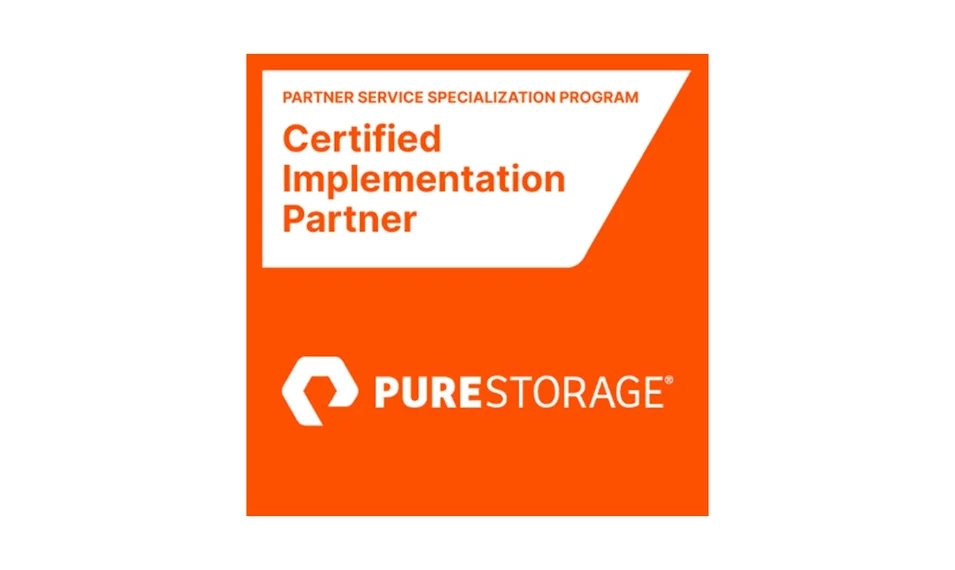
Brazil , Dec 14, 2023
Logicalis conquista FlashArray Certified Implementation Partner, importante selo da Pure Storage
A empresa é a primeira parceira da Pure Storage na América Latina a receber o selo de FlashArray Certified Implementation Partner, da Pure Storage.
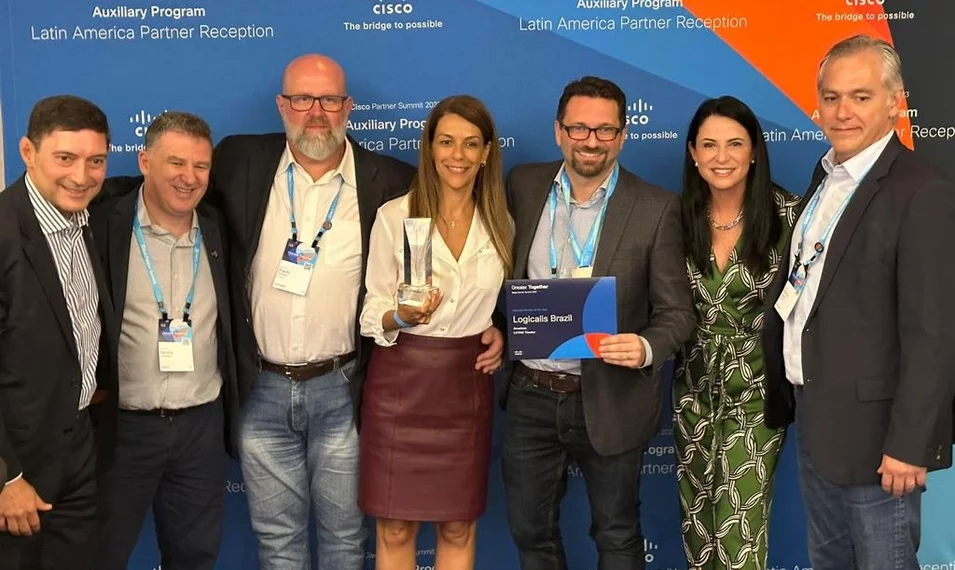
Brazil , Nov 10, 2023
Logicalis é premiada como Parceira Global de Sustentabilidade do Ano no Cisco Partner Summit 2023
Empresa é destaque no primeiro ano da premiação por suas iniciativas em sustentabilidade e o sucesso em ajudar os clientes a reduzir o impacto ambiental de suas infraestruturas de TI em todo o mundo.
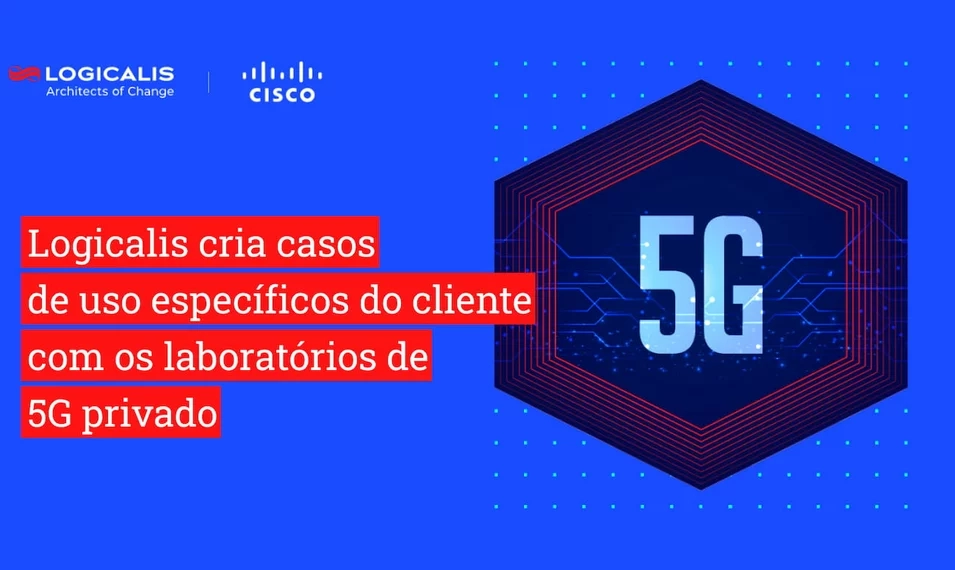
Global , Oct 11, 2023
Concretizando casos de uso: Logicalis cria casos de uso específicos do cliente com os laboratórios de 5G privado
Logicalis cria casos de uso específicos do cliente com os laboratórios de 5G privado
Brazil , Aug 24, 2023
Logicalis anuncia nova Chief People & Administration Officer
Luciana Depieri assume com o desafio de impulsionar o posicionamento da companhia como uma empresa de serviços continuados em tecnologia

Brazil , Aug 18, 2023
Logicalis registra crescimento de 60% na venda de soluções e serviços Microsoft
A Logicalis obteve no fiscal year 2023 (FY23) um crescimento de 60% de vendas Microsoft, se comparado com o ano anterior.
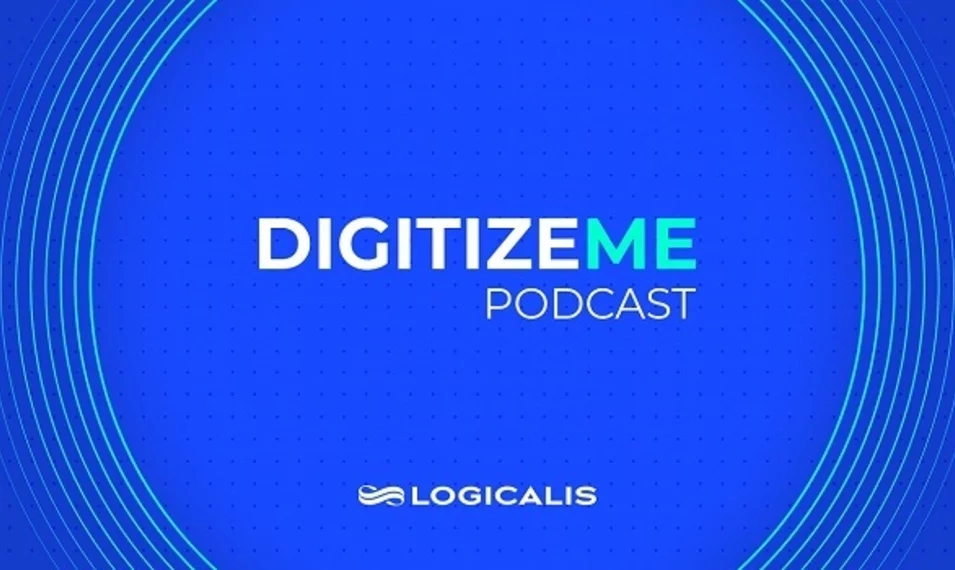
Brazil , Aug 3, 2023
Logicalis lança podcast de tecnologia no AWS Summit 2023
O podcast Digitizeme conta com quatro episódios que abordam os temas de Modernização de Aplicações, FinOps, ESG e Realtime Analytics.

Brazil , Jul 6, 2023
Nova plataforma da Logicalis fornece aos CIOs visão em tempo real do impacto ambiental
O Digital Fabric Platform da Logicalis oferece aos usuários uma visão instantânea de seu desempenho digital em cinco métricas-chave, incluindo o impacto ambiental

Brazil , Jul 5, 2023
Logicalis abre inscrições para nova turma do programa de capacitação em TI para grupos minoritários
Iniciativa gratuita e focada em profissionais negros está com inscrições abertas até 31 de julho

Brazil , Jun 29, 2023
Logicalis renova sua certificação como Cisco Global Gold Integrator
Como um dos apenas seis parceiros certificados como Global Gold da Cisco, a Logicalis tem obtido sucesso ao entregar inovação, engajamento e valor para clientes em todo o mundo
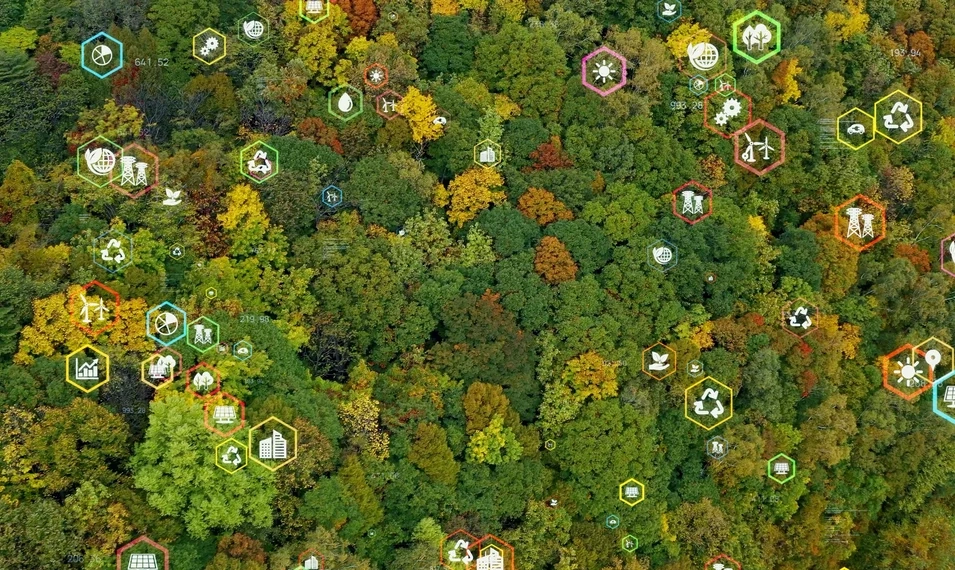
Brazil , Jun 28, 2023
CIOs se reúnem para tratar de sustentabilidade no Logicalis CIO Summit 2023
O ESG está crescendo e ganhando importância para os clientes de TI
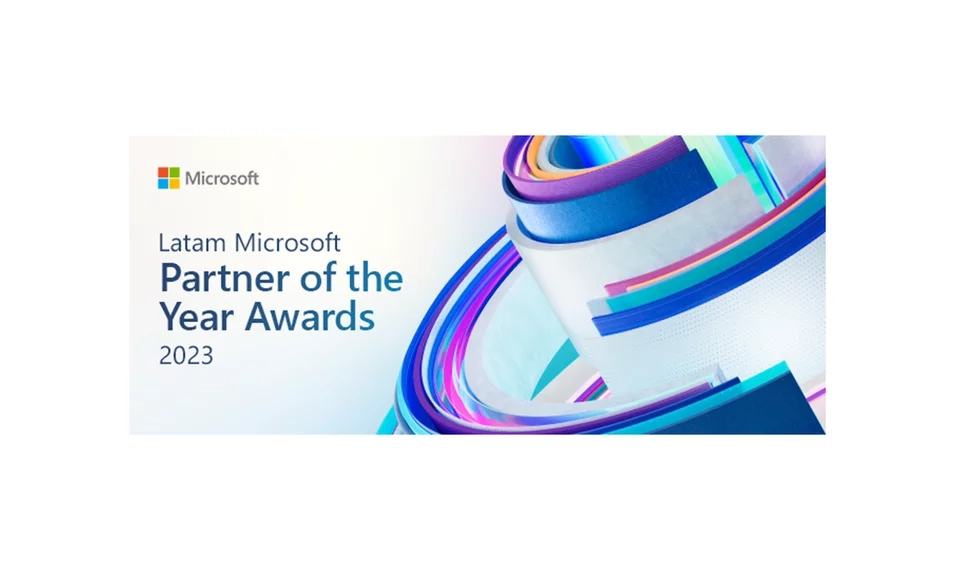
Brazil , Jun 28, 2023
Logicalis é vencedora em três categorias do Microsoft Partner of the Year Award
Empresa foi destaque em Azure, Industry e Business Transformation

Brazil , Jun 22, 2023
Estudo da Logicalis indica que 45% das empresas brasileiras migraram ou estão migrando para a nuvem, mas apenas 34% têm processos de governança de custos na nuvem (FinOps)
De acordo com levantamento, apenas 22% das companhias brasileiras contam com uma equipe dedicada para a gestão financeira dos serviços em cloud
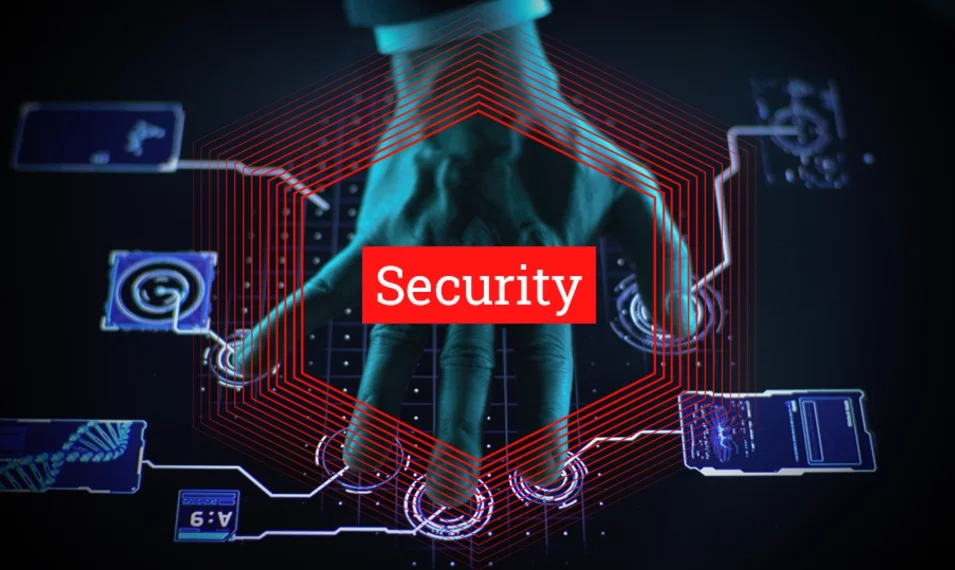
Brazil , May 30, 2023
Apenas 36% das organizações brasileiras afirmam estar totalmente aderentes à LGPD
Dois anos após a entrada da lei em vigor, 43% das empresas ainda estão em processo de adoção de iniciativas de adequação à LGPD e 6% ainda não têm ações específicas

Brazil , Apr 12, 2023
Pesquisa da Logicalis aponta tendência por serviços de TI para contornar a escassez de profissionais qualificados no mercado
De acordo com estudo IT Trends Snapshot 2023, 94% das empresas foram impactadas pela escassez de profissionais qualificados e 82% estão ampliando o uso de serviços como forma de garantir a continuidade dos negócios
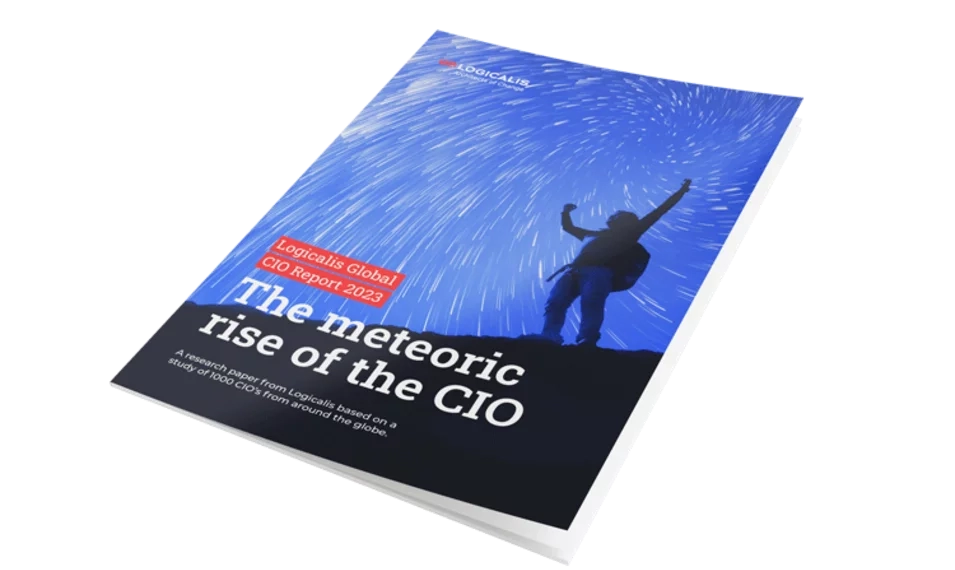
Brazil , Mar 17, 2023
Liderança ousada leva CIOs a assumir papel de destaque nas decisões de negócios, aponta estudo da Logicalis
De acordo com levantamento Global CIO Report 2023, 50% dos executivos de TI afirmam que o conselho da empresa espera que eles ofereçam inovação contínua

Brazil , Mar 6, 2023
Logicalis firma parceria com a Iniciativa Empresarial pela Igualdade Racial
Acordo tem como objetivo reforçar estratégia da empresa voltadas à diversidade e inclusão
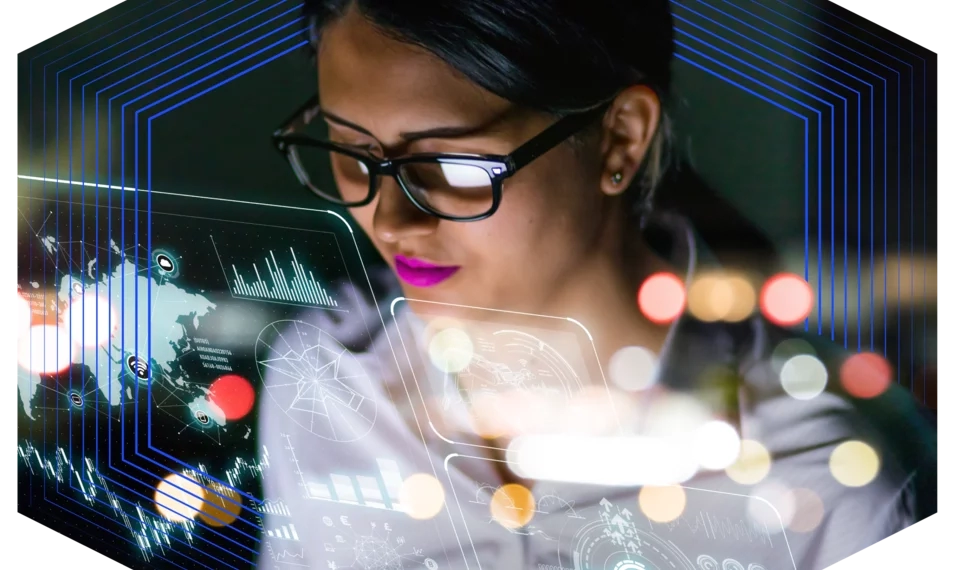
Brazil , Feb 23, 2023
Logicalis adere à Carta de Princípios da Brasscom
Iniciativa visa o fortalecimento das relações formais de trabalho, reforçando os compromissos das empresas com os valores ESG, como a transparência, a legalidade e a governança

Brazil , Feb 16, 2023
Logicalis lança programa de capacitação em TI para grupos minoritários
Primeira edição será focada em profissionais negros e tem como objetivo impulsionar o desenvolvimento de competências na área de tecnologia

Brazil , Feb 10, 2023
Logicalis inicia operação na República Dominicana
Com o anúncio, empresa passa a atuar em 12 países na América Latina
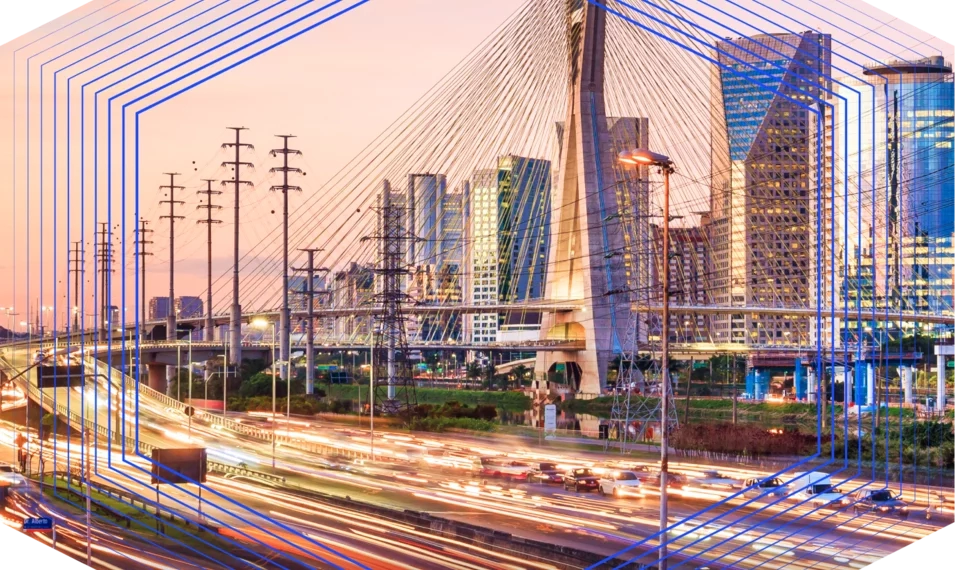
Brazil , Feb 8, 2023
Logicalis Brasil lança seu primeiro relatório de sustentabilidade
Documento aborda as ações da organização focadas em ESG e sua oferta de soluções tecnológicas voltadas a promover práticas sustentáveis
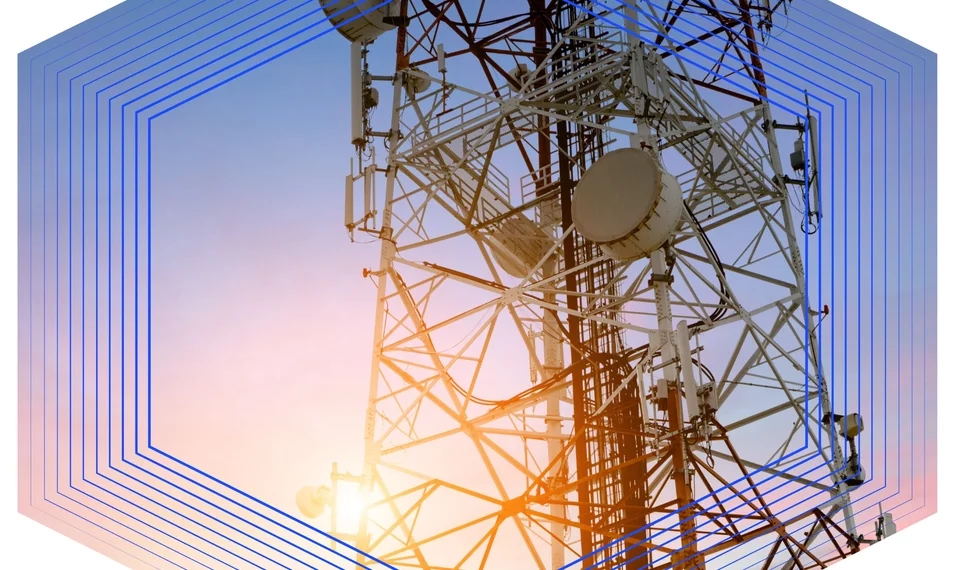
Brazil , Jan 17, 2023
Intelbras instala rede 5G privada para desenvolvimento de soluções tecnológicas
Laboratório de testes está localizado na matriz da empresa; iniciativa envolve colaboração com Logicalis, Qualcomm, Microsoft e Telecom Infra Project
, Jun 29, 2022
Kumulus é eleita parceira do ano da Microsoft
Criada em 2017, com foco em cloud e data analytics, a empresa vem crescendo mais de 180% anualmente
, Jun 15, 2022
Logicalis anuncia parceria em 5G com a Oracle
Com a parceria, a Oracle fornecerá funções de rede nativas em nuvem, que passam a compor as soluções de 5G oferecidas pela Logicalis para provedores de serviços em toda a América Latina.
, Jun 7, 2022
Logicalis cria grupos de afinidades para promover discussões e iniciativas a respeito da diversidade e inclusão corporativa
O objetivo é incorporar o assunto de forma completa, com a conscientização de toda a companhia a respeito da inclusão de grupos minoritários
, Jun 6, 2022
Logicalis anuncia compromisso de se tornar carbono neutro até 2025
Meta global envolve as operações da empresa em 27 países
, May 31, 2022
Logicalis cresce 16% na América Latina
Brasil respondeu por mais de 60% do resultado da região
, May 19, 2022
Para 57% dos executivos brasileiros, a inovação é um pilar da estratégia corporativa, aponta IoT Snapshot 2022
A quinta edição do estudo também mostra que 33% das organizações brasileiras e 13% das hispano-americanas participam de hubs de inovação visando aproximação com startups
, May 4, 2022
IoT Snapshot 2022 aponta que 42% das empresas no Brasil planejam investir em projetos de IoT nos próximos 18 meses
Segundo o levantamento realizado pela Logicalis, a tecnologia já é uma realidade na América Latina e segue em expansão
, Apr 25, 2022
Logicalis elege solução de base de dados da HPE para compor sua oferta de 5G no Brasil
Com o HPE Shared Data Environment (SDE), que incorpora a base de dados do 5G e 4G, composto pelos elementos UDR 5G, UDR 4G, UDM e AUSF e o gerenciamento especializado da Logicalis, as companhias conseguem entregar a melhor solução 5G para as operadoras e empresas
, Apr 11, 2022
Logicalis realiza primeira chamada 5G em ambiente de teste
Empresas interessadas na construção de redes 5G terão acesso a demonstrações e simulações de uso da nova tecnologia
, Apr 8, 2022
Logicalis recebe especializações avançadas de segurança da Microsoft
A conquista valida o conhecimento, ampla experiência e expertise da Logicalis na área
, Apr 4, 2022
Logicalis realiza primeira chamada 5G em ambiente de teste
Empresas interessadas na construção de redes 5G terão acesso a demonstrações e simulações de uso da nova tecnologia
, Mar 29, 2022
Logicalis e IBM colaboram para acelerar adoção de 5G nos negócios da América Latina
Companhias ajudarão os provedores de serviços de Internet com automação, orquestração e gerenciamento das redes 5G.
, Mar 15, 2022
Logicalis promove mudanças na sua estrutura na América Latina e reforça sua estratégia de foco no cliente
Entre as novidades estão as nomeações de Riccardo Modica para Vice-presidente Executivo no Brasil e de Marcio Caputo para COO Latam
, Feb 25, 2022
Logicalis é reconhecida como uma das 100 melhores empresas de outsourcing pela IAOP
Esta é a sétima vez consecutiva que a empresa integra a lista da Associação Internacional de Profissionais de Outsourcing®
, Feb 21, 2022
Logicalis nomeia Alejandro Sajón como country manager para Argentina, Paraguai e Uruguai
Executivo chega à empresa com o objetivo de promover a transformação e o crescimento dos negócios do cluster Argentina, Paraguai e Uruguai
, Feb 17, 2022
Logicalis anuncia novo CFO para a América Latina
O executivo terá a missão de liderar o time de finanças e apoiar a jornada de transformação digital dos clientes, criando valor de forma sustentável em toda a cadeia
, Jan 19, 2022
Logicalis é reconhecida como líder em estudo do ISG sobre soluções AWS
Empresa foi eleita líder em quatro dos seis quadrantes do estudo ISG Provider Lens™ AWS Ecosystem Partners 2021, que acaba de ser divulgado.
, Jan 7, 2022
Logicalis conquista certificação DevNet da Cisco
Reconhecimento atesta a capacidade de entregar soluções customizadas aos clientes
, Jan 6, 2022
Logicalis renova certificação Microsoft Azure Expert
Pelo 3º ano consecutivo, a empresa se mantém entre os principais 1% dos parceiros Microsoft em todo o mundo
, Jan 6, 2022
Logicalis reforça equipe com foco na expansão das operações no Rio de Janeiro e Espírito Santo
O objetivo é ampliar a presença nos segmentos de finanças, indústrias, saúde e energia
, Jan 6, 2022
Logicalis reforça equipe para expandir operações no Rio Grande do Sul
Ao lado de Beatriz Campolina, Ariadne Osandabaráz será responsável por ampliar a atuação da multinacional na região Sul do país
, Jan 4, 2022
Logicalis reforça equipe com foco no crescimento das operações no Paraná
Ampliação do time de vendas faz parte da estratégia para expandir a atuação no estado
, Dec 16, 2021
Apenas um terço dos CIOs cita a mitigação de riscos cibernéticos como uma medida de performance
Estudo da Logicalis revelou que quase metade dos entrevistados (47%) vê as violações de dados como o maior risco para suas organizações
Brazil , Dec 14, 2021
Logicalis é líder em dois quadrantes no Estudo ISG Provider Lens™ Analytics Services 2021
A empresa conquistou a liderança em Data Science Services e em Data Engineering Services.
, Dec 9, 2021
CIOs dedicam hoje mais tempo à inovação do que nunca
Apesar dos esforços, menos de um terço descreve a inovação como parte da cultura da empresa
, Dec 6, 2021
Kan Wakabayashi é o novo CTO da Logicalis para a América Latina
O executivo tem a missão de desenvolver um portfólio de soluções e serviços que impulsione a transformação digital dos clientes da Logicalis
, Dec 2, 2021
Logicalis renova certificação Master Data Center & Hybrid Cloud da Cisco
Com esta recertificação, a empresa continua como a única parceira Brasil com todos os Masters Cisco.
, Dec 2, 2021
Logicalis é destaque em oferta Cloud do Relatório ISG Provider Lens™ Public Cloud 2021
A capacidade da Logicalis de apoiar seus clientes na migração para a nuvem garantiu à empresa uma posição de destaque no relatório
, Dec 2, 2021
75% dos CIOs lutam para extrair insights de dados dentro de sua organização
Embora 78% das empresas percebam o valor da transformação digital, apenas um quarto delas usa dados para conduzir a estratégia de negócio
, Nov 25, 2021
CIOs priorizam a inovação para melhorar as conexões digitais dos clientes
O estudo revela que os respondentes afirmam que suas prioridades são inovação, eficiência operacional e experiência do cliente.
, Nov 10, 2021
Logicalis é premiada em seis categorias no Cisco Partner Summit 2021
Entre os destaques estão o reconhecimento como Mass Scale Infrastructure Partner of the Year para as Américas e Brasil e Parceiro do Ano no Brasil
, Nov 8, 2021
Logicalis é destaque do VI Prêmio Compliance ESG Brasil 2021
O reconhecimento certifica a excelência da gestão corporativa da empresa, que valoriza as iniciativas de integridade por meio do compliance atrelado ao ESG
, Oct 20, 2021
Logicalis lança solução Global de Segurança
No centro da solução Secure OnMesh estão as capacidades nativas de nuvem e a inteligência artificial do Azure Sentinel, combinadas ao poder do Cisco Secure X
, Oct 20, 2021
Logicalis está entre as melhores empresas para se trabalhar no Brasil
A empresa conquistou a posição 23º do GPTW , na categoria “Grandes empresas”
, Oct 13, 2021
Logicalis está entre as 20 melhores empresas do Brasil do Anuário Época 360
A Logicalis conquista a 18ª posição entre as 418 melhores empresas do país
, Oct 5, 2021
Logicalis filia-se à Microsoft Intelligent Security Association (MISA)
Objetivo é unir forças com diversos players da indústria para combater as ameaças digitais
, Sep 2, 2021
Plataforma da Logicalis facilita o acesso a soluções de IoT
Baseado em Azure, o EUGENIO 2.0 permite a qualquer cliente que já utiliza a plataforma da Microsoft habilitar o sistema, acelerando a adoção da Internet das Coisas
, Aug 26, 2021
Logicalis oferece ferramenta para avaliar a maturidade digital das empresas
Reconhecida pelo ISG com líder em consultoria em Digital Business, companhia decidiu divulgar uma versão resumida do Assessment realizado em seus projetos
, Aug 23, 2021
Logicalis neutraliza emissões de gases de efeito estufa de 2020
A ação da empresa compõe uma carteira de compensação de emissões, que contêm energia renovável e eólica, bem como projetos de conservação de florestas e “desenvolvimento limpo”
, Aug 17, 2021
Logicalis é reconhecida como líder pelo IDC no estudo MarketScape
Pesquisa atesta excelência dos serviços de consultoria de rede em todo o mundo, destacando a Logicalis como Worldwide Network Consulting Services 2021 Vendor Assessment
, Aug 11, 2021
Estudo da Logicalis aponta as prioridades de negócio e de tecnologia das empresas brasileiras
Segurança da informação e adequação à LGPD são as principais prioridades para mais de 50% das organizações nos próximos meses
, Aug 4, 2021
Logicalis está entre as 15 Melhores Empresas do GPTW Latin America 2021!
Neste ano, a empresa foi reconhecida na categoria Multinacionais e está entre as 15 melhores companhias para se trabalhar na América Latina
, Aug 4, 2021
Logicalis apoia projeto para impulsionar presença feminina no mercado de TI
Como parte de suas ações voltadas à inclusão do público feminino no mercado de tecnologia, a Logicalis é uma das patrocinadoras do Women Rock IT (WRIT), da Cisco
, Jul 28, 2021
Logicalis lança série animada para despertar interesse das crianças por carreiras ligadas à tecnologia
Episódios da Megaliga serão compartilhados a cada quinze dias no canal do YouTube da empresa e, com linguagem lúdica, apresentam o poder transformador da TI
, Jul 21, 2021
De olho na 5G, Logicalis associa-se à comunidade de padrões abertos de conectividade
Filiação ao Telecom Infra Project (TIP) permite a troca mais intensa de conhecimento com as empresas que estão à frente do movimento por padrões abertos
, Jul 8, 2021
Logicalis é vencedora em quatro categorias do Microsoft Partner of the Year Award
A excelência da Logicalis como provedora de soluções e serviços de TIC mais uma vez foi reconhecida. A empresa venceu em quatro categorias do Microsoft Partner of the Year Award, sendo o parceiro com o maior número de premiações para a região da América Latina e Caribe.
, Jul 8, 2021
Logicalis anuncia contratação de diretor focado em desenvolvimento de negócios em parceria com a Microsoft
Chegada de Rodolfo Roim está alinhada à estratégia da empresa de impulsionar o crescimento em soluções de cloud e serviços gerenciados
, Jun 30, 2021
Logicalis expande operação regional e reforça presença em MG
Marcelo Pantaleão assume como Head de Vendas para Regionais e tem como principal desafio ampliar os negócios no mercado mineiro
, Jun 21, 2021
Logicalis mantém rentabilidade na América Latina em meio à pandemia
Período foi marcado pela conquista de novos projetos ligados à transformação digital e pelo crescimento dos negócios com parceiros de nuvem pública
, Jun 10, 2021
Logicalis fortalece sua estratégia de Cloud e se posiciona como fornecedor completo de soluções em nuvem
Entre as principais iniciativas da empresa para este ano, estão o fortalecimento do seu ecossistema de parcerias — que já contava com os maiores provedores de nuvem do mundo — e a contratação de Alexandre Theodoro como diretor da unidade de Cloud
, Jun 8, 2021
Logicalis adquire a empresa siticom, especialista em infraestrutura avançada de rede e soluções 5G
O investimento reforça a capacidade da Logicalis de entregar serviços definidos por software para os clientes que buscam conectar pessoas e dispositivos
, Jun 3, 2021
Logicalis adquire participação majoritária na Kumulus para acelerar a jornada dos seus clientes para a nuvem
Com a aquisição, a Logicalis complementa o seu portfólio de soluções com a expertise da Kumulus em modernização de aplicações e gestão de ambientes de nuvem híbrida
, Jun 2, 2021
Para acelerar a digitalização dos serviços públicos, Logicalis cria estrutura dedicada ao desenvolvimento de negócios junto ao governo
A demanda crescente pela simplificação do acesso da população a serviços por meio da digitalização insere o setor no centro da estratégia da companhia
, Jun 2, 2021
Logicalis anuncia novo diretor de Serviços de TI para América Latina
A Logicalis acaba de anunciar Leonardo Malvar como diretor de Serviços de TI para América Latina. O executivo ficará responsável pela área na região, além de responder pela gestão dos Centros de Operações de Segurança (SOCs) existentes no Brasil e na Colômbia.
, May 26, 2021
Logicalis anuncia novo diretor de tecnologia e portfólio na América Latina, com foco na Transformação Digital da região
A Logicalis acaba de nomear Christian Hisas como Diretor de Tecnologia e Portfólio da Logicalis para América Latina
, May 17, 2021
Logicalis abre as inscrições para segunda edição do programa de estágio para alunos brasileiros em formação no exterior
O Summer Talent Logicalis 2021 será 100% online e tem como objetivo fomentar a inovação, a troca de experiências e a diversidade de visões
, May 13, 2021
Logicalis fortalece parceria com Microsoft para acelerar evolução das operadoras na América Latina
Empresa incorpora nova solução ao seu portfólio para apoiar empresas de telecomunicações da região em seus desafios futuros
, May 13, 2021
Logicalis é líder em Digital Business Consulting, pelo ISG Provider Lens™
A empresa foi reconhecida por fornecer serviços consistentes de consultoria em negócios digitais de alta qualidade para auxiliar os clientes em sua transformação digital
, May 12, 2021
Markus Erb se une à Logicalis como novo VP de serviços do grupo, conduzindo o alinhamento global de Serviços Gerenciados
A Logicalis anunciou a nomeação de Markus Erb como vice-presidente de serviços do grupo para conduzir o alinhamento e inovação na recém estabelecida Organização Global de Serviços (GSO) da Logicalis
, May 10, 2021
Logicalis é um dos patrocinadores do projeto Xadrez para Todos
Conhecendo o valor do esporte para seus funcionários e os benefícios que ele proporciona, a empresa viu na ação social uma oportunidade de incentivar a educação de forma lúdica e transformadora
, May 6, 2021
Logicalis anuncia Marcelo Silva como novo diretor de vendas Enterprise
O executivo será responsável pela liderança do relacionamento e o desenvolvimento de negócios para acelerar a transformação digital dos clientes
, Apr 19, 2021
Logicalis tem novo diretor de consultoria para Saúde
Marcello Albuquerque chega com a missão de aumentar a representatividade da área no faturamento da companhia
, Apr 14, 2021
Logicalis reforça liderança no Brasil para ampliar atuação em 5G
Daniela Almeida assume diretoria de Tecnologia da empresa
, Apr 6, 2021
Logicalis adquire empresa espanhola de cibersegurança
A Logicalis anuncia hoje a aquisição de uma participação majoritária na Áudea, empresa especializada em cibersegurança e conformidade regulatória
, Apr 6, 2021
Paulo Torres é o novo COO da Logicalis Brasil
Executivo conta com mais de 25 anos de atuação no mercado de tecnologia e está há mais de nove na companhia
, Mar 10, 2021
Logicalis se consolida como uma das principais provedoras de serviços na América Latina
Com integração regional de atendimento e portfólio fim a fim, empresa conquista a premiação da IAOP® pelo sexto ano consecutivo
, Mar 8, 2021
Logicalis promove evento em parceria com Microsoft, Block C e Duratex S.A para discutir os impactos gerados pela emissão de gás carbônico das empresas
Entre os palestrantes estão os CEOs da Logicalis na América Latina, Rodrigo Parreira, e da Microsoft Brasil, Tânia Cosentino, além de Marcelo Furtado, sócio fundador da Block C, Marina Grossi, do Conselho Empresarial Brasileiro para o Desenvolvimento Sustentável e Giancarlo Tomazim, gerente de Inovação Corporativa da Duratex S.A
, Feb 26, 2021
Logicalis está entre as 16 melhores empresas para se trabalhar em São Paulo
A empresa foi reconhecida na categoria “Região Metropolitana – Grandes” e está entre as 16 melhores companhias para se trabalhar em São Paulo
, Feb 23, 2021
Logicalis renova certificação global em serviços gerenciados para a nuvem Microsoft Azure Expert
A Logicalis, empresa global de soluções e serviços de tecnologia da informação e comunicação, renovou sua certificação Microsoft Azure Expert Managed Services Provider (MSP)
, Jun 17, 2020
Logicalis aplica Inteligência Artificial para aprimorar a segurança e garantir a continuidade dos negócios de seus clientes
Com a tecnologia, empresa passa a oferecer uma plataforma de serviço digital que apoiará as organizações a acelerarem a inovação e adaptação à economia digital
, Jun 4, 2020
Logicalis entre as melhores empresas para trabalhar na América Latina de acordo com o Great Place to Work®
A empresa atingiu a posição 20 na categoria de empresas multinacionais
, Jun 1, 2020
Logicalis é pela quinta vez consecutiva uma das 100 melhores empresas de outsourcing pela IAOP
A Logicalis, empresa global de soluções e serviços de tecnologia da informação e comunicação, foi reconhecida pela quinta vez consecutiva como uma das 100 melhores empresas de outsourcing pela IAOP - Associação Internacional de Profissionais de Outsourcing®.
, Mar 6, 2020
Logicalis recebe o status Azure Expert Managed Services Provider, da Microsoft
A empresa está entre as 65 companhias no mundo a receber a certificação
, Oct 14, 2019
Logicalis registra crescimento de 19% em receita líquida na América Latina
Resultado reforça importância da região para a companhia, que cresce cerca de 20% pelo segundo ano consecutivo
, Dec 17, 2018
Par perfeito
Um casamento que deu certo. Assim pode ser traduzida a parceria da Logicalis com a Cisco, que completa 20 anos em 2018.
, Dec 17, 2018
Área de serviços agora é Optimal Services em toda América Latina
Objetivo é deixar claro que todos os países da região entregam a mesma experiência para o cliente
, Dec 17, 2018
De olho na performance das aplicações
A AppDynamics, cujos produtos fazem parte do portfólio da Cisco desde sua aquisição no início de 2017, nomeou a Logicalis como seu braço de serviços para toda a América Latina. O monitoramento de aplicações dá visibilidade aos sistemas em tempo real e de forma simples, identificando e tratando os problemas rapidamente.
, Sep 4, 2018
Logicalis conclui aquisição do grupo Coasin no Chile e no Peru
Integração traz robustez às operações e potencializa a visão da Logicalis como protagonista da transformação digital na América Latina
, Jun 11, 2018
Logicalis contribui para transformação digital do setor financeiro
Empresa oferece um portfólio completo de soluções para auxiliar as instituições, desde a melhoria do atendimento ao cliente até a digitalização de seus processos
, Apr 2, 2018
Logicalis destaca impacto da transformação digital nos data centers
Empresa auxilia clientes a definir melhor estratégia para processar, armazenar e gerenciar aplicações e informações na nuvem
, Mar 22, 2018
Logicalis firma parceria com Canonical
Juntas, empresas pretendem impulsionar adoção de open source na América Latina, principalmente em soluções relacionadas à nuvem
, Nov 7, 2017
Logicalis é parceira do ano da Cisco na América Latina
Premiação reconhece a excelência técnica de sua equipe e a capacidade de atender às necessidades de seus clientes em toda a região
, Sep 20, 2017
Logicalis firma parceria com Itron
Acordo visa acelerar crescimento de smart grids no Brasil e contribuir para que as redes de distribuição de energia sejam mais inteligentes
, Aug 15, 2017
Logicalis é a 17º melhor empresa no ranking GPTW Brasil
O resultado do ranking 2017 comprova o forte investimento realizado pela Logicalis no desenvolvimento de seus profissionais nos últimos anos
, Jul 27, 2017
Computação em nuvem se consolida e já é usada por 82% das empresas brasileiras
IT Brazil Snapshot, estudo realizado pela Logicalis, apresenta cenário de maturidade de uso e adoção tecnologia no País
, Jul 12, 2017
Logicalis e Microsoft anunciam parceria estratégica na América Latina
Acordo engloba todo o portfólio da fabricante e está alinhado à estratégia da Logicalis de ser o parceiro ideal do cliente durante a transformação digital
, Jul 4, 2017
Logicalis adquire NubeliU
Negócio reforça o portfolio da empresa em OpenStack e seu posicionamento como cloud integrator
, May 29, 2017
Rede varejista Angeloni agiliza transações comerciais com solução de armazenamento totalmente flash da Pure Storage
Tecnologia de armazenamento da Pure Storage permitiu à 10ª maior rede varejista do País reduzir em 10x ou mais o tempo de resposta para bancos de dados que envolvem os processamentos de atividades diárias, principalmente transações online. O Angeloni conseguiu diminuir em até 50% o tempo de geração de relatórios internos.
, Apr 25, 2017
Logicalis reforça atuação como cloud broker
Estratégia visa ajudar empresas a migrarem suas aplicações para nuvem no modelo mais adequados ao seu negócio
, Apr 11, 2017
Logicalis dá mais um passo na integração da operação latino-americana
Empresa unifica gestão dos países de língua espanhola e consolida as operações regionais de sua área de serviços
, Mar 2, 2017
PromonLogicalis passa a usar a marca Logicalis no Brasil
Mudança ocorrerá a partir de 1º de março e visa reforçar a integração regional e facilitar a comunicação com os principais interlocutores da empresa
, Mar 1, 2017
PromonLogicalis passa a usar a marca Logicalis no Brasil *******
Mudança ocorrerá a partir de 1º de março e visa reforçar a integração regional e facilitar a comunicação com os principais interlocutores da empresa
, Feb 21, 2017
PromonLogicalis reforça atuação em infraestrutura definida por software
Com experiência em cloud Computing e virtualização, Alex Hübner liderará as atividades da empresa na área de Software Defined Infrastructure (SDI) tendo a tecnologia OpenStack como um de seus principais pilares
, Feb 17, 2017
PromonLogicalis reforça atuação em infraestrutura definida por software
Com experiência em cloud Computing e virtualização, Alex Hübner liderará as atividades da empresa na área de Software Defined Infrastructure (SDI) tendo a tecnologia OpenStack como um de seus principais pilares
, Jan 11, 2017
PromonLogicalis anuncia novo diretor de vendas
Executivo comandará área de negócios com foco no desenvolvimento de soluções alinhadas às necessidades de diferentes verticais
, Oct 17, 2016
PromonLogicalis apresenta soluções de IoT para diferentes setores na Futurecom 2016
Empresa demonstrará soluções de conectividade que transformarão o dia a dia dos negócios e das pessoas
, Sep 27, 2016
PromonLogicalis e Ixia anunciam parceria para América Latina
Acordo envolve soluções de segurança, teste e visibilidade de rede com foco nos mercados corporativo, de data centers e de operadoras
, Jun 22, 2016
PromonLogicalis anuncia parceria com IP Trade
A PromonLogicalis acaba de fechar uma parceria com a IP Trade, líder em comunicação e colaboração em tempo real para mesas de operações. Juntas, as empresas oferecerão ao mercado uma solução de colaboração avançada para atividades críticas de diversos setores, como bancos, corretoras de valores, aviação e concessionárias de energia.
, Jun 21, 2016
PromonLogicalis apresenta sua visão sobre blockchain durante o CIAB
De olho no potencial do blockchain, base de dados de transações distribuídas, para o mercado financeiro, a PromonLogicalis, provedora de soluções e serviços de tecnologia da informação e comunicação na América Latina, apresenta sua proposta de valor sobre o tema durante o CIAB Febraban, Congresso e Exposição de Tecnologia da Informação das Instituições Financeiras, que ocorre entre os dias 21 e 23 de junho, em São Paulo.
, May 25, 2016
PromonLogicalis é uma das 20 Melhores Empresas para Trabalhar na América Latina
A PromonLogicalis conquistou o 17º lugar no prêmio “Melhores Empresas para Trabalhar na América Latina – mais de 500 colaboradores”, duas posições acima da alcançada no ano anterior. A empresa é a única do setor de tecnologia da informação a constar no ranking, realizado pelo Instituto Great Place to Work.
, May 11, 2016
PromonLogicalis lança Wingo para aprimorar experiência do cliente
A PromonLogicalis apresenta a plataforma Wingo, uma solução completa que inclui hardware, serviços e consultoria. Trata-se de uma plataforma que permite às empresas expandirem o uso de suas redes Wi-Fi, seja coletando informações sobre seus usuários ou entregando conteúdos personalizados a eles.
, May 10, 2016
Combinação de wi-fi e analytics mudará experiência do consumidor
Cada vez mais as tecnologias estão presentes em todos os ambientes. A junção de diferentes ferramentas possibilita um melhor entendimento do comportamento dos clientes e a oferta de uma experiência personalizada a eles. A PromonLogicalis acredita que as soluções de analytics são fundamentais para conhecer melhor os consumidores e, quando combinadas a outras tecnologias, permitem um aproveitamento ainda melhor dos dados.
, May 9, 2016
PromonLogicalis é considerada Rising Star no ranking The 2016 Global Outsourcing 100
A empresa foi destaque nas categorias Referência de Clientes, que avalia o valor percebido por eles, Prêmios e Certificações, que analisa os prêmios e reconhecimentos recebidos pelos profissionais e pela organização, e Tamanho e Crescimento, na qual são mensurados a receita, o faturamento, o número de funcionários e a presença global.
, Apr 6, 2016
Para PromonLogicalis, operadoras precisam inovar para fidelizar os clientes
O tráfego de dados no Brasil aumentará sete vezes entre 2015 e 2020*. Garantir a disponibilidade e a qualidade dos serviços de conectividade aos clientes são dois dos grandes desafios das operadoras de telefonia. Porém, para fidelizar seus clientes, as operadoras precisam mais do que atender suas expectativas, precisam superá-las. A PromonLogicalis oferece um portfólio completo para as operadoras: desde tecnologias de acesso até a gestão da experiência do cliente.
, Apr 5, 2016
Consumidor será o motor da transformação do setor elétrico, afirma PromonLogicalis
O setor de utilities mundial vem passando por inúmeras mudanças nos últimos anos, especialmente devido aos avanços das tecnologias envolvidas em sua operação. Para ajudar as empresas do setor a modernizarem a sua infraestrutura e oferecerem um serviço de alta qualidade aos usuários, a PromonLogicalis aposta em três grandes pilares: digitalização, engajamento do consumidor e eficiência operacional.
, Apr 4, 2016
PromonLogicalis fortalece estratégia de serviços e se posiciona como cloud integrator
Em linha sua sua estratégia de fortalecimento de serviços, a PromonLogicalis posiciona-se como cloud integrator, oferecendo atendimento consultivo e totalmente customizado para ajudar as empresas a direcionarem os seus esforços de cloud computing.
, Mar 28, 2016
Para PromonLogicalis, IoT é o caminho para tornar as cidades mais inteligentes
A tecnologia é, cada vez mais, parte do dia a dia de pessoas e organizações. Na administração pública não poderia ser diferente – embora, muitas vezes, o processo de adoção seja um pouco mais lento. Para ajudar as empresas e o setor público a ingressarem nesse universo digital e tornar as cidades mais inteligentes, a PromonLogicalis, provedora de serviços e soluções de tecnologia da informação e comunicação na América Latina, participa do SmartCity Business America Congresso & Expo, que será realizado em Curitiba entre os dias 28 e 30 de março.
, Mar 22, 2016
Portal mapeia ocorrências do Aedes aegypti no País
Os últimos surtos de dengue, zika e chikungunya no Brasil aumentaram ainda mais a preocupação das pessoas e os cuidados em relação ao Aedes aegypti, mosquito que transmite essas doenças. Pensando nisso, a PromonLogicalis, provedora de serviços e soluções de tecnologia da informação e comunicações na América Latina, desenvolveu o Radar Aedes, um portal que reúne informações geolocalizadas sobre as ocorrências do mosquito em todo o País com o apoio da população. O objetivo é ser um hub de informações sobre o tema e, desta forma, ajudar no combate ao inseto.
, Mar 11, 2016
Logicalis Latin America é premiada pela Cisco em nove categorias
Operação brasileira destacou-se com a conquista de quatro prêmios, entregues durante o Cisco Partner Summit 2016
, Mar 1, 2016
Logicalis Latin America reforça estrutura de liderança
Com o objetivo de se preparar para as transformações tecnológicas e de negócios dos próximos anos, a Logicalis Latin America, provedora de serviços e soluções de tecnologia da informação e comunicação na América Latina, anuncia uma reestruturação de suas operações e reforço da liderança, tanto no Brasil quanto na América Latina.
, Feb 22, 2016
PromonLogicalis está entre as 100 melhores prestadoras de serviços de outsourcing do mundo
A PromonLogicalis foi eleita uma das 100 maiores e melhores prestadoras de serviços pelo Global Outsourcing 100.
, Feb 15, 2016
Estudo da PromonLogicalis aponta que gestores na América Latina acham TI mais estratégica que CIOs de outras regiões do mundo
Grande parte dos profissionais de TI na América Latina consideram que o peso que a área de TI tem nos resultados do negócio é maior que nas demais regiões analisadas (Europa, Estados Unidos, Ásia, Países Árabes, China e Austrália). Numa comparação, 28% dos gestores latino americanos deram nota máxima quando analisam a importância de TI nos resultados, enquanto na Europa e nos EUA a nota máxima foi a resposta de 17% dos gestores, de 15% na APAC (Ásia, Países Árabes e China) de 8% na Austrália.
, Aug 8, 2014
PromonLogicalis conquista a 9a posição entre as “Melhores Empresas para Trabalhar TI e Telecom”, do GPTW Brasil
Premiação é reflexo dos investimentos e da preocupação da empresa em manter um ambiente de trabalho agradável e propício à inovação e ao desenvolvimento profissional.
, May 21, 2014
PromonLogicalis debate sobre segurança na modernização da rede elétrica
Durante L.E.T.S, integradora participa do painel “Smartgrids e as interfaces entre energia e telecomunicações” e mostra sua visão sobre evolução das redes e riscos do processo.
, Apr 28, 2014
PromonLogicalis debate a eficácia das plataformas SON nas redes móveis durante o LTE Latin America 2014
Durante o evento, integradora apresenta sua visão sobre o papel de tecnologias como small cells e soluções de software na melhoria do desempenho das redes móveis
, Apr 1, 2014
PromonLogicalis apresenta sua visão sobre o impacto do SDN nos atuais data centers
Durante conferência do Gartner, empresa explica como o conceito de arquitetura definida por software impactará o futuro dos data centers e mudará a gestão da infraestrutura de TI nas empresas
, Feb 25, 2014
A Logicalis recebe certificação TelePresence Video Master Satellite da Cisco na região CANSAC
Na Logicalis, contamos com diversas certificações da Cisco, que refletem nossas habilidades nas tecnologias de colaboração, voz e vídeo.
, Feb 10, 2014
PromonLogicalis e Ascenty anunciam parceria
Juntas, empresas oferecem ao mercado o que há de mais moderno em soluções de data center e serviços gerenciados de TIC.
, Dec 16, 2013
Logicalis adquire quatro operações europeias da 2e2
O acordo dará início à estratégia de expansão da integradora na Europa continental
, Dec 16, 2013
A Logicalis incorpora novo aliado na região: Acme Packet
Recentemente associou-se à Acme Packet, líder em session delivery networks, que oferece uma entrega segura de serviços de próxima geração de voz, dados, comunicações unificadas e aplicativos através de redes IP.
, Dec 16, 2013
Logicalis, Elite Partner da Blue Coat
A Blue Coat promoveu a Logicalis ao nível Elite Partner, o mais alto entre seus aliados, após completar um processo de alta certificação e treinamento técnico sobre as soluções Blue Coat.
, Dec 16, 2013
A adoção de BYOD é mais rápida em mercados de rápido crescimento
Um relatório do Instituto Ovum, encomendado pela Logicalis, revela que 57,1% dos funcionários de tempo integral participa de programas de Bring Your Own Device.
, Dec 16, 2013
Blue Coat consolida aliança com a Logicalis na América Latina
O acordo permite que a Logicalis adquira sistemas de segurança de rede diretamente da Blue Coat para integrá-los aos projetos que oferece ao setor público, a clientes corporativos e ao mercado de telecomunicações.
, Dec 11, 2013
Logicalis e Red Hat, novo acordo na Argentina
A companhia continua fortalecendo sua oferta de data center adicionando a Red Hat como nova aliada.
, Dec 11, 2013
Estivemos na Andicom 2013
Entre os dias 28 e 30 do mês de agosto, a Logicalis participou mais uma vez do Congresso Internacional de Tecnologia e Comunicação Andicom, realizado anualmente em Cartagena, na Colômbia.
, Dec 11, 2013
Logicalis Latin America inicia operações no México
Movimento dá continuidade à expansão e integração das operações latino-americanas da empresa
, Nov 13, 2013
PromonLogicalis apresenta sua visão sobre SDN em redes corporativas no Gartner Symposium/ITxpo 2013
Nova arquitetura de redes é alicerce para suportar cenário atual das redes corporativas cada vez mais conectadas
, Nov 11, 2013
Rodrigo Parreira é o novo CEO da PromonLogicalis
Executivo tem como missão dar continuidade ao ritmo de crescimento da integradora e consolidar suas operações na América Latina
, Nov 11, 2013
Diego Martinez é o novo COO da Logicalis Andina
Com mais de 20 anos de experiência no setor, executivo tem a missão de fortalecer a presença e ampliar os negócios da empresa na região
, Nov 11, 2013
PromonLogicalis anuncia aquisição de operações da Cibercall na Colômbia e no Equador
Negócio tem como objetivo fortalecer a atuação da integradora na região andina.
, Nov 8, 2013
PromonLogicalis divulga estudo sobre transformação da telefonia móvel com a chegada da rede 4G
A quarta geração de telefonia móvel chega em um momento de grande transformação do mercado de dados.
, Nov 8, 2013
PromonLogicalis registra crescimento de 31% no Brasil
Receita líquida da empresa no país totalizou R$704 milhões no ano fiscal encerrando em fevereiro de 2013.
, Nov 8, 2013
Logicalis Latin America é eleita pela Cisco como parceira do ano na América Latina
Prêmio foi recebido pelo CEO da Logicalis Latin America, Rodrigo Parreira, durante o Cisco Partner Summit 2013
, Nov 8, 2013
Pesquisa da PromonLogicalis aponta que mercado brasileiro de TIC tem nível intermediário de maturidade
Estudo Brazil IT Snapshot 2013 avalia área de TI corporativa com base nos pilares de segurança da informação, continuidade de negócios, computação em nuvem e mobilidade.
, Nov 8, 2013
PromonLogicalis firma parceria com AirWatch
Acordo complementa o portfólio da provedora com soluções de mobilidade empresarial e segurança de dispositivos móveis.
, Nov 8, 2013
PromonLogicalis apresenta sua visão sobre as principais tendências do mercado de TIC durante a 15ª edição do Futurecom
Mais uma vez, empresa participa do evento ao lado de alguns de seus principais parceiros, como Airwatch, Arbor, BlueCoat, CA, Cisco, Nominum e Panduit.
, Oct 29, 2013
Desempenho da Logicalis na América Latina é destaque nos resultados da Datatec
Controladora divulgou os resultados do primeiro semestre do ano fiscal (H1 FY13), encerrado em 31 de agosto
